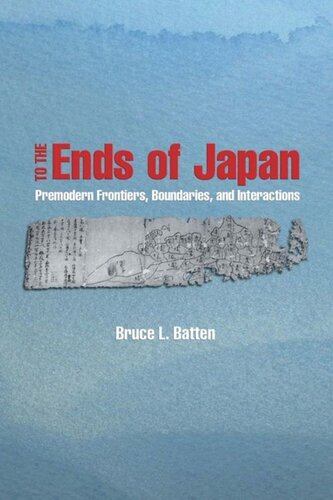

Most ebook files are in PDF format, so you can easily read them using various software such as Foxit Reader or directly on the Google Chrome browser.
Some ebook files are released by publishers in other formats such as .awz, .mobi, .epub, .fb2, etc. You may need to install specific software to read these formats on mobile/PC, such as Calibre.
Please read the tutorial at this link: https://ebookbell.com/faq
We offer FREE conversion to the popular formats you request; however, this may take some time. Therefore, right after payment, please email us, and we will try to provide the service as quickly as possible.
For some exceptional file formats or broken links (if any), please refrain from opening any disputes. Instead, email us first, and we will try to assist within a maximum of 6 hours.
EbookBell Team

5.0
20 reviewsWhat is Japan? Who are its people? These questions are among those addressed in Bruce Batten's ambitious study of Japan's historical development through the nineteenth century. Traditionally, Japan has been portrayed as a homogenous society formed over millennia in virtual isolation. Social historians and others have begun to question this view, emphasizing diversity and interaction, both within the Japanese archipelago and between Japan and other parts of Eurasia. Until now, however, no book has attempted to resolve these conflicting views in a comprehensive, systematic way.
To the Ends of Japan tackles the "big questions" on Japan by focusing on its borders, broadly defined to include historical frontiers and boundaries within the islands themselves as well as the obvious coastlines and oceans. Batten provides compelling arguments for viewing borders not as geographic "givens," but as social constructs whose location and significance can, and do, change over time. By giving separate treatment to the historical development of political, cultural, and ethnic borders in the archipelago, he highlights the complex, multifaceted nature of Japanese society, without losing sight of the more fundamental differences that have separated Japan from its nearest neighbors in the archipelago and on the Eurasian continent.